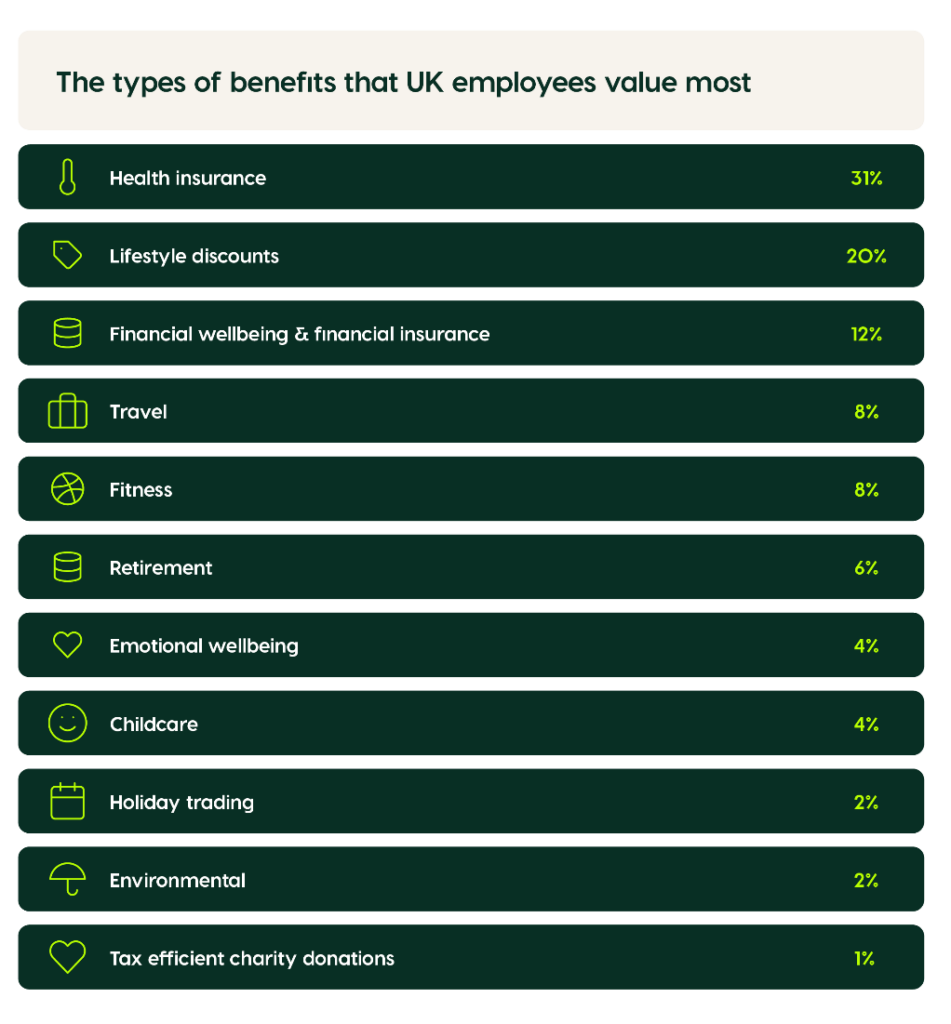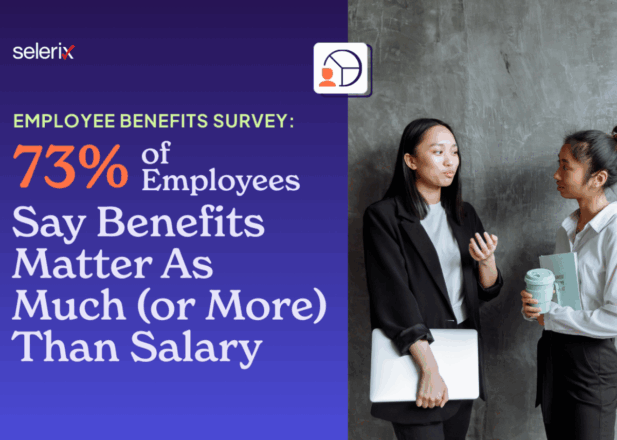
09th January 2024
Guest Post: What are the most popular employee benefits globally?

Author: Paul Andrews, Global benefits director, Benefex
Earlier this year, we surveyed thousands of global employees and employers to uncover the latest trends in reward and benefits. What was very clear in the research was the growing importance employees now place on their benefits package – 61% of global employees say benefits provision is a very important factor when choosing an employer and 91% believe benefits directly impact their wellbeing.
When we asked employees to identify the three types of benefits that they find most valuable, health and health insurance, financial wellbeing, and lifestyle savings came out on top.
Most popular benefits in 2023

This is certainly in line with what we’ve seen in the trends on our own benefits technology platform, OneHub. When we analyse the millions of data points for employee benefit selections, it’s clear that benefits that support financial wellbeing and provide financial protection have seen the biggest increase in popularity and now top the table of employee selections. Across the board, people see the greatest value in insured benefits.
Interestingly however, some of the benefits employees are looking for to enhance their financial wellbeing, such as access to affordable loans, are not offered by many employers. Only 4% of employers offer access to affordable loans, despite the value that employees are placing on this as a way to consolidate debt, access cheaper interest rates and gain more control over their finances.
Alongside financial protections, health insurance and access to medical care are still a focus for employees. With NHS waiting lists at record highs in the UK and ongoing challenges within the US and Indian healthcare systems, employees place enormous value on health insurance plans.
We’ve also seen an increase in the popularity of benefits which support wider business objectives. For example, sustainable benefits like electric car schemes and tree planting are now offered by around a third of businesses, and take-up of these types of benefits has more than doubled over the last year.
Our research found that 88% of employees think that benefits show them whether an employer aligns with their personal values. As a result, employers are assessing their benefits programmes through the lens of the wider organisational strategy, values and purpose.
The benefits employees want more of
According to employees, personalisation and wellbeing are at the top of the list of things employers could do to improve their benefits. Our research indicates that employers are acutely aware of this demand. 50% of HR and Reward professionals report that employees are demanding more flexibility and personalisation in benefits compared to 12 months ago, and 48% claim that employee expectations for wellbeing support have increased.
The research reinforces trends that we’re seeing in the global market. Employees in Asia are more focused on getting fundamental protections and insurances, while those in Europe and the US are more likely to be looking for greater flexibility and choice in their benefits package. For example, life insurance in the UK and US is firmly established as a core employee benefit (often with an option to include a spouse or partner), while in India or Singapore this type of benefit is still relatively rare. The US still leads the world in terms of wellbeing provision, whether that’s resource-based support or Employee Assistance Programmes. These types of benefits are less prevalent in India and Singapore, but demand will undoubtedly start to grow.
Fundamentally, employees all over the world want to be, and feel, looked after by their employer, but what this means and looks like varies across every country. It’s not just that employee needs are different – it’s also the size and sophistication of the benefits industry in each country. The UK has a very rich and complex benefits market, but this doesn’t mean there is a deeper need for benefits amongst employees; it’s just a manifestation of how the market has evolved.
Creating a global benefits strategy
Multinational organisations are adopting global benefits strategies that can translate into local requirements to deliver consistency in the way they look after their people. That could be a top-level strategy to ensure all employees are protected for later life and retirement, or to protect their health and provide good medical care. This global strategy can then be translated into a plan for each country.
The starting point for employers to develop a holistic and consistent global benefits programme is an audit of what benefits they are offering in each market, and a benchmark of how competitive these benefits are at a local level. Once they’ve identified gaps, employers can launch new benefits, or adjust existing benefits to ensure all bases are covered.
4 popular benefits to consider for your 2024 global benefits strategy
- Benefits allowances
We’ve seen a major uptick in the last 12 months in the number of employers looking to deliver benefits allowances – and this trend is likely to continue into 2024.
It’s very time consuming to source benefits such as gym membership or health assessments in each country. Employers are using allowances to get around the admin and take-up challenges in benefits, and give their people the choice and flexibility they want. Employees can choose (within rules set by the employer) to make absolutely anything a benefit – and wellbeing allowances are a popular use case for this.
- Workplace healthcare and protection benefits
Industry data from the UK shows the speed at which the workplace healthcare and protection sector is growing. The biggest growth has come in the group PMI market, with providers increasing the number of employees covered by 10.9% in 2022. At the same time, the number of employees covered by group income protection and group critical illness both increased by over 5%. More organisations are looking to offer health and protection benefits to employees, wherever they are in the world.
Even where employers aren’t able to fund all the benefits employees want, there’s still value in making these available on a voluntary basis. Health insurance, critical illness cover and income protection are popular, even when they’re not funded, and support employees when they need it most.
- Holiday trading
Having been popular in the UK for some time, more and more customers are looking to roll-out holiday purchase globally – 32% of our global customers now offer holiday purchase as a benefit.
With 64% of employees saying that a commitment to employee wellbeing is the most important factor when choosing a new employer, additional time off from work is an obvious way to support physical and emotional wellbeing – helping employees combat burn-out, achieve a better work/life balance and spend more time with the people that matter most to them. As well as creating a healthy culture that’s supportive of taking a break, holiday purchase allows employers to introduce flexibility, with no additional cost to the business (as a salary sacrifice benefit in some countries, it’s cost neutral for employers).
- Tree planting
Eco-anxiety is increasing within workforces and reforestation subscriptions are a direct way employers can have a positive impact on the environment and look to support the eco-wellbeing of their people. Organisations can get involved by funding as many levels as they wish, to support their, and their employees’, climate goals. With more people looking to work for organisations that are aligned with their personal values, sustainable benefits like tree planting are a great way for employers to show their people how they’re putting their ESG mission into action.
Uncover the latest global benefits trends
Take a look at our Big Benefits Report , why employers offer them, and the impact of offering the most valued benefits, with the right tech. Get your copy here.





